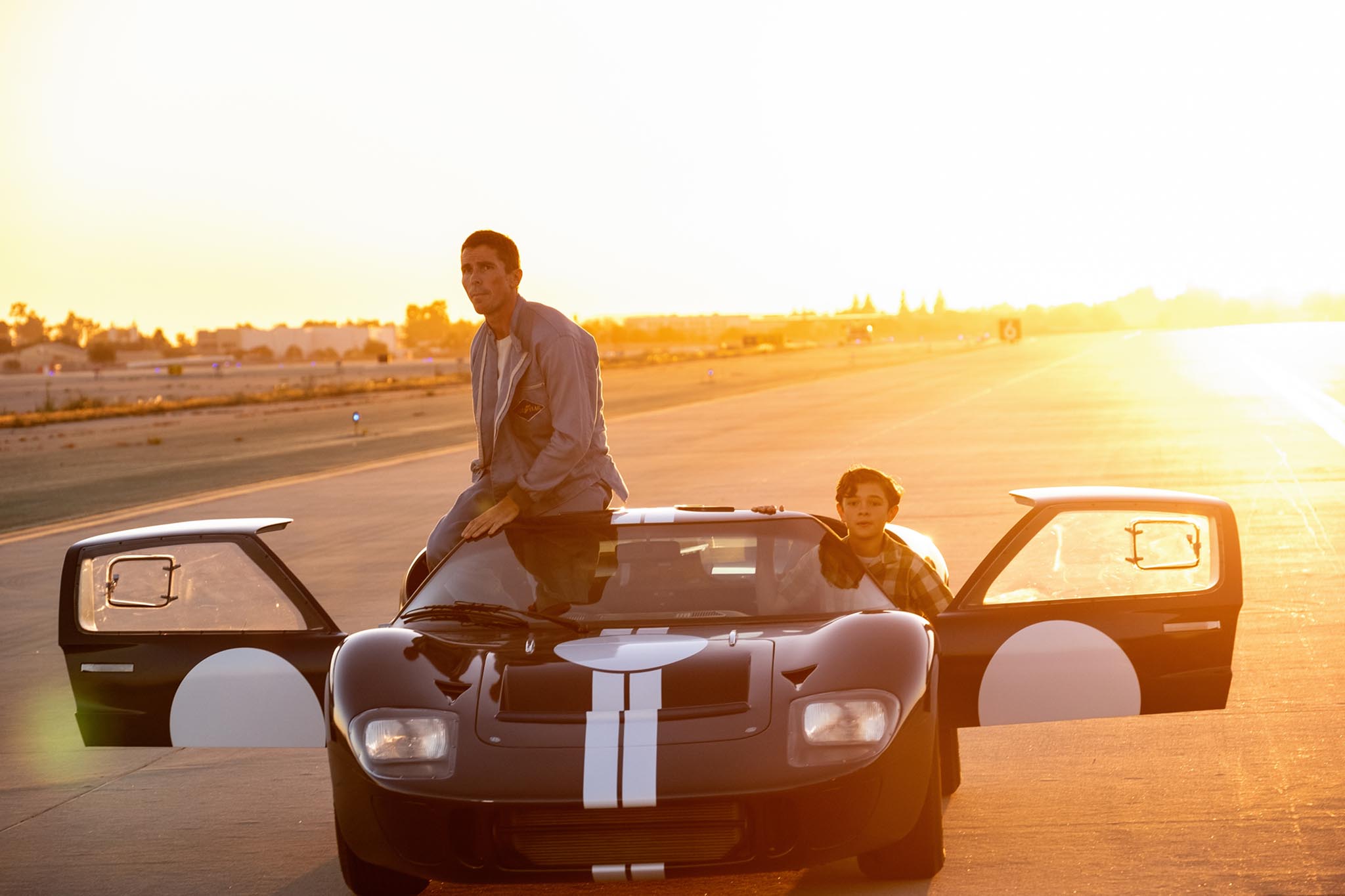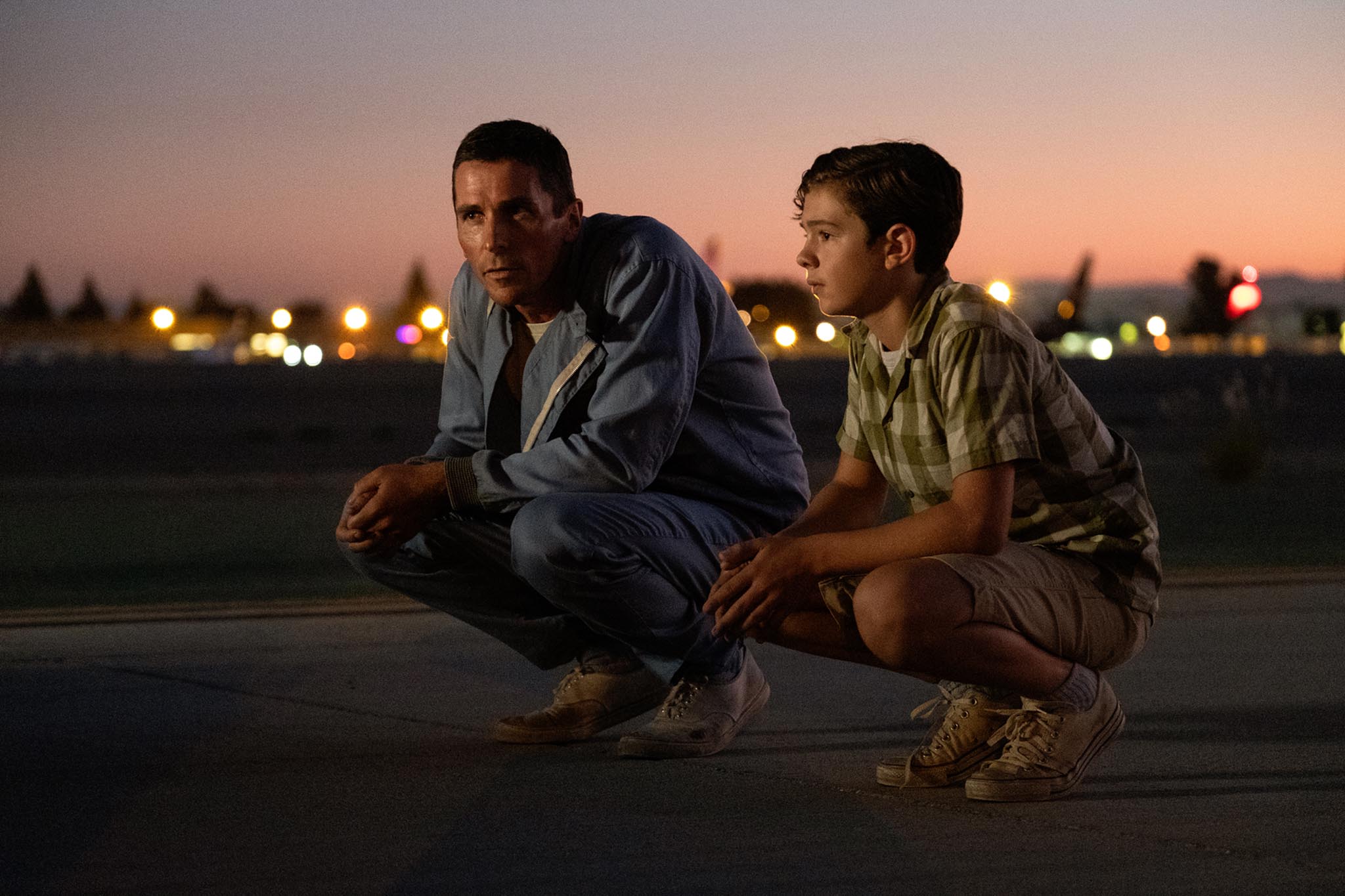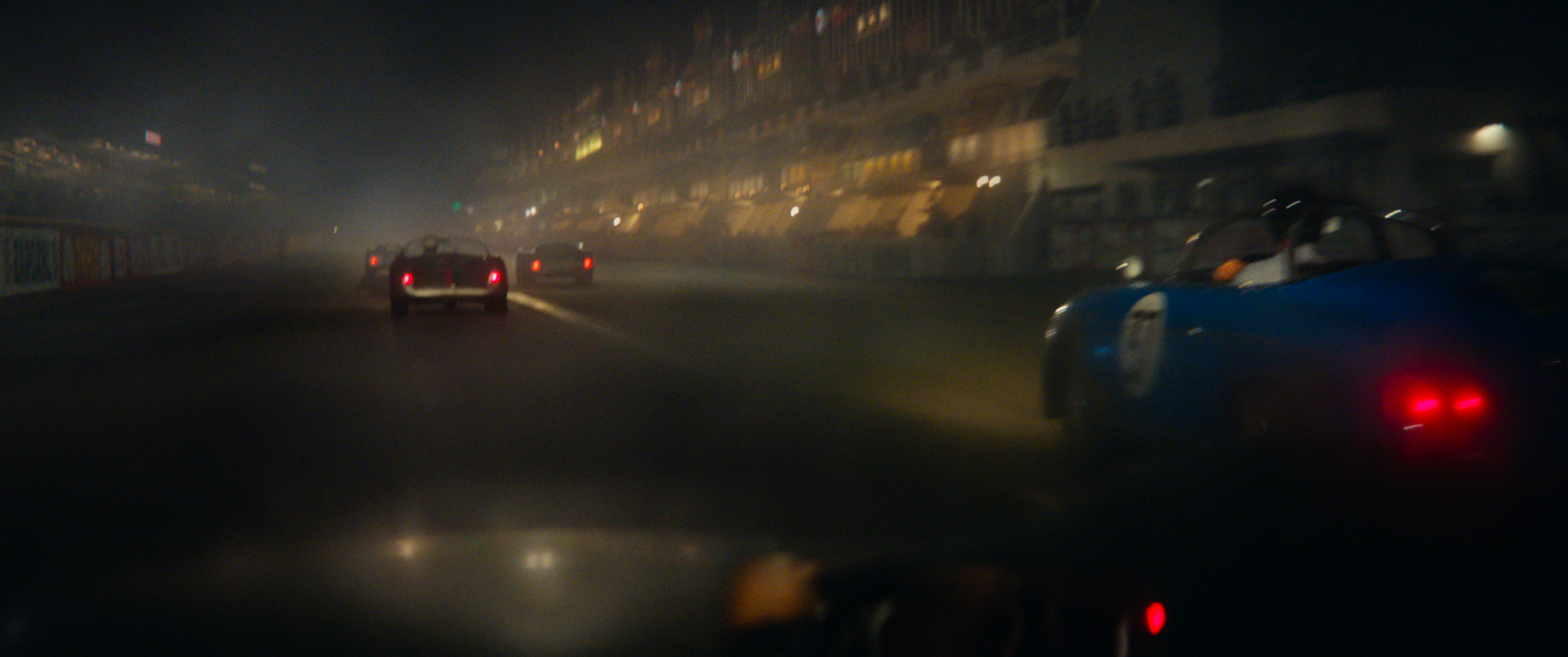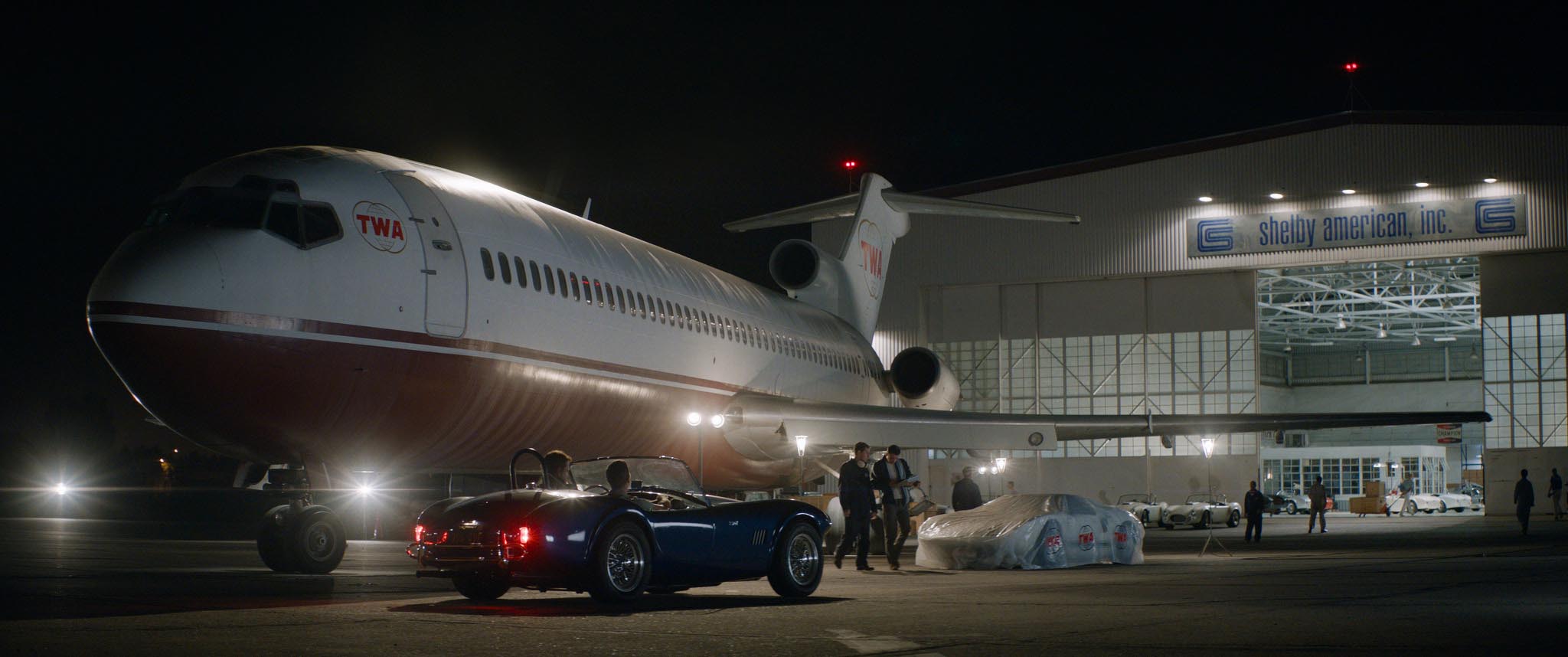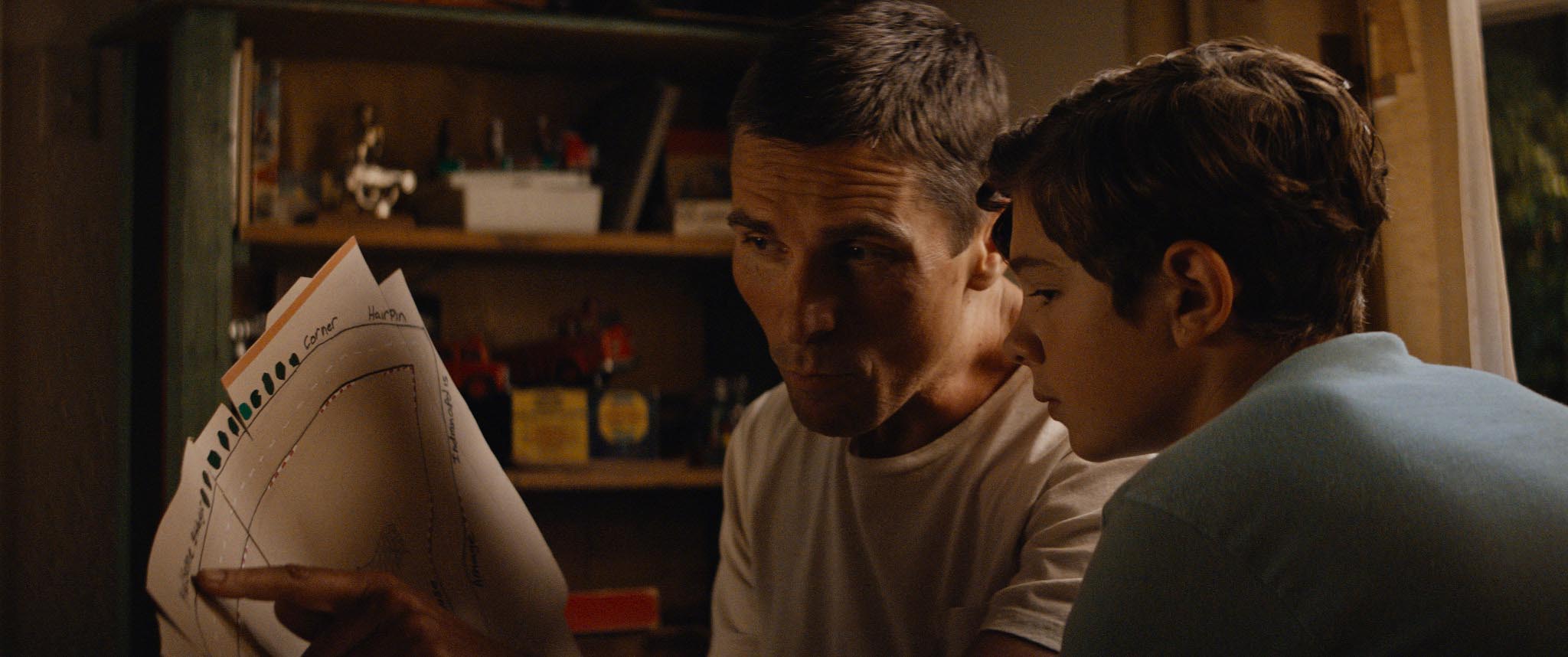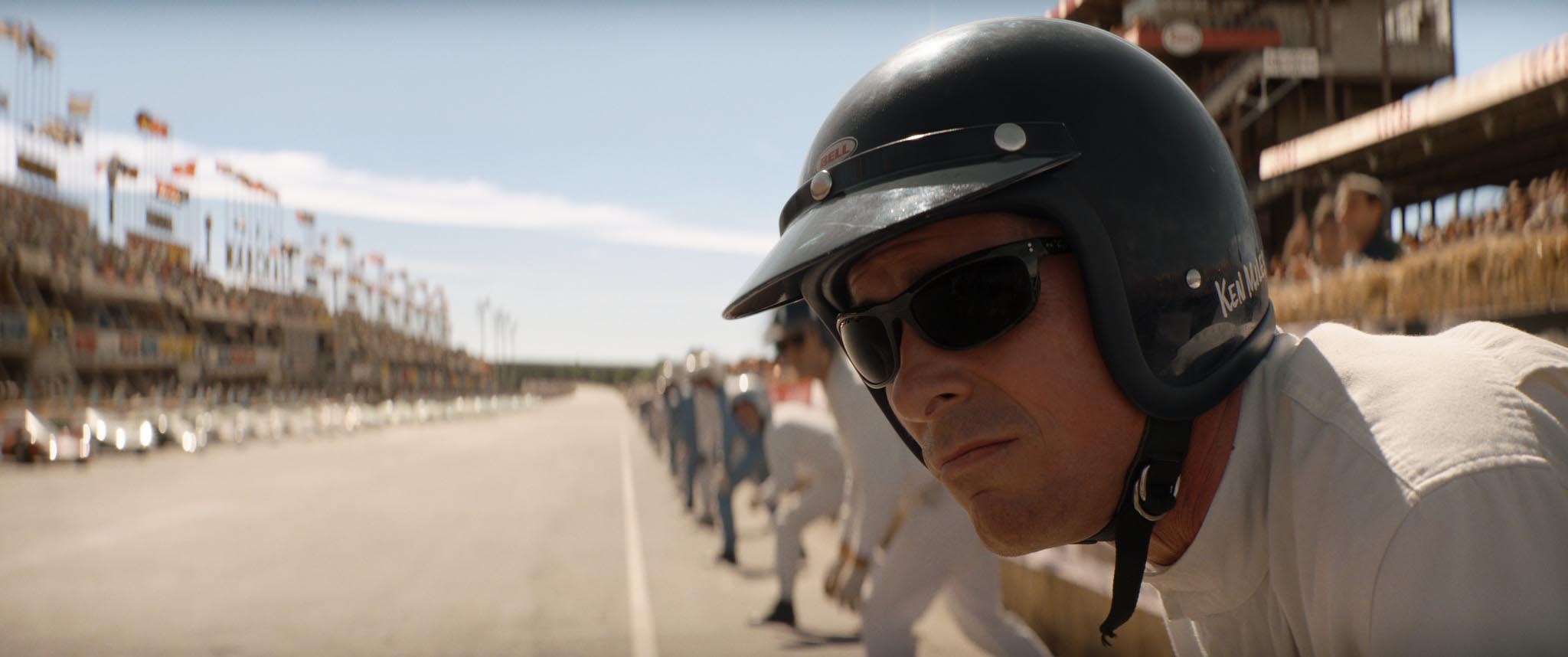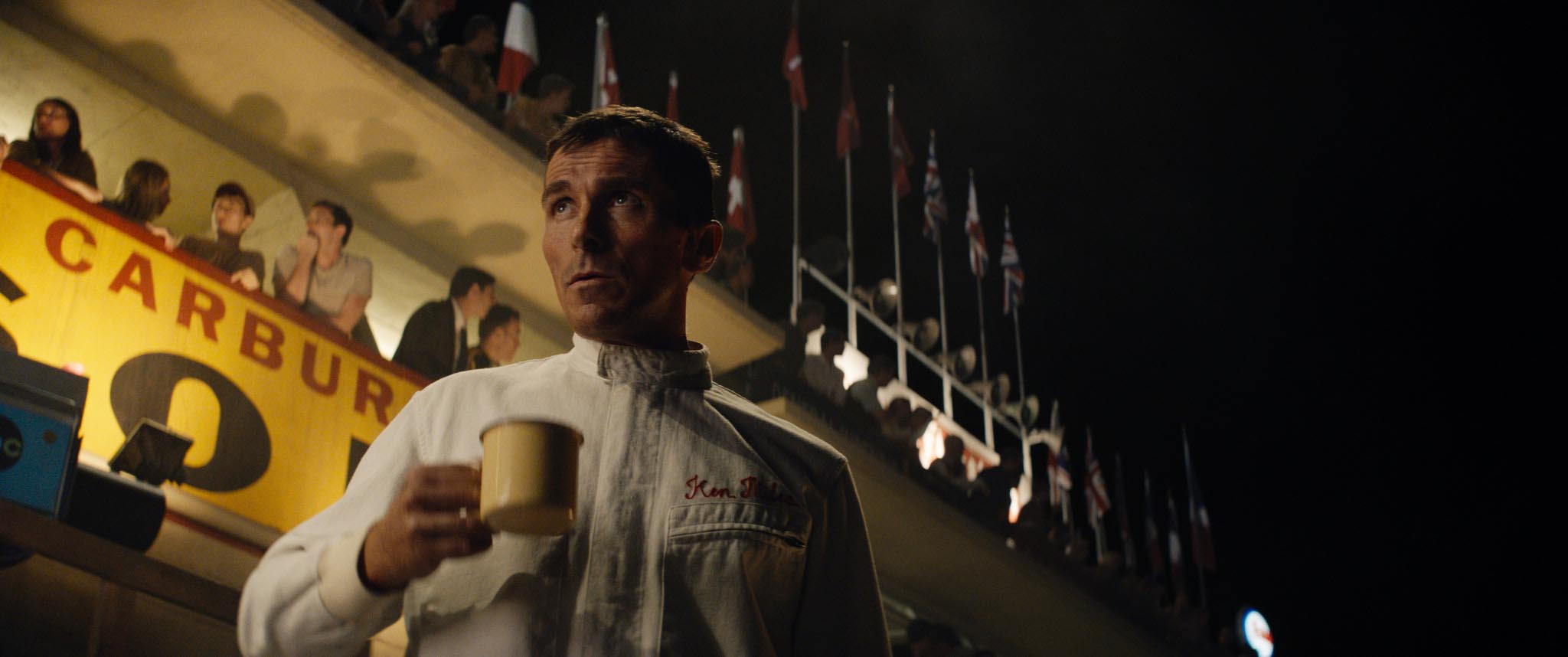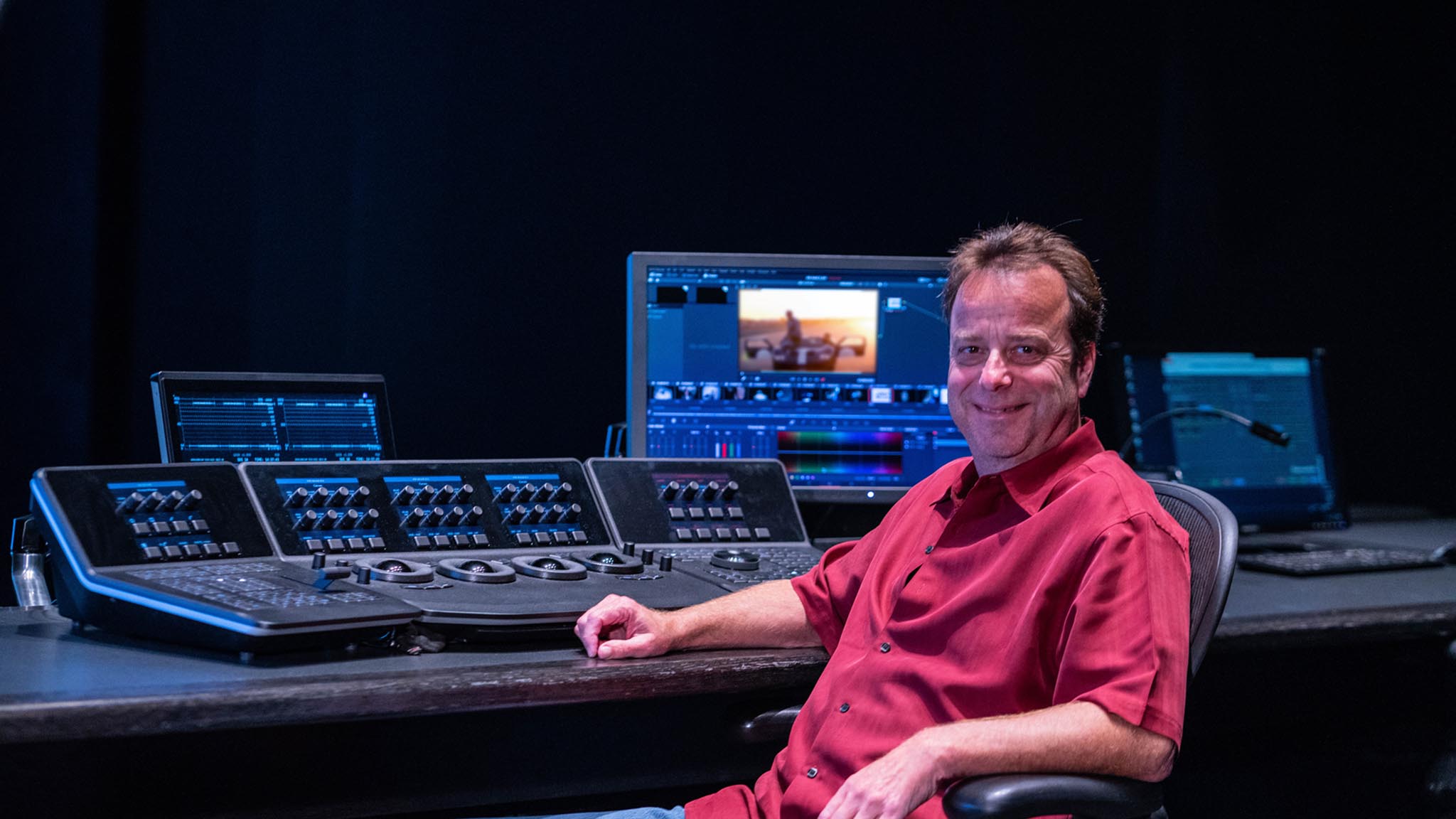
Company 3 Senior Colorist Skip Kimball driving his DaVinci Resolve Studio in Deluxe’s flagship theater, Stage One.
In last month’s FDTimes, Nicol Verheem (Founder & CEO of Teradek and CEO of Creative Solutions) said, “One of my recent favorite memories was watching Ford v Ferrari with my 12-year- old son. I can remember walking out and he said, ‘First off, that was a really good movie. And second, when can we come back and see it again?’”
I saw it again as well and was delighted to get in touch with Company 3’s Senior Colorist Skip Kimball about the film’s impressive grading.
Ford v Ferrari was directed by James Mangold. Cinematography was by Phedon Papamichael ASC, GSC. It’s based on the true story of Carroll Shelby (Matt Damon) and Ken Miles (Christian Bale) as they work to win the 24 hour race at Le Mans in 1966.
Although Ford v Ferrari takes place in 1966, the filmmakers resisted an initial “vintage” look. “We developed the show LUT during camera testing,” Kimball said. “It was important that the film evoked a period feeling without appearing like an old movie.” Some historical notes: John Frankenheimer’s Grand Prix was released in 1966, shot in Super Panavision 70 format and a young Austrian named Otto Nemenz was the show’s camera technician.
Cut to 2018. During prep, Papamichael researched films like Grand Prix. He commented, “It was very important to us to convey that these little machines were just a bunch of nuts and bolts holding together this gigantic engine, with the danger and the intensity of what it’s like in a race car.”
DaVinci Resolve Studio was used not only to grade and conform the film but also for quick reviews and visual effects updates.
Shot in at least seven different camera formats, Resolve’s resolution independence let Kimball work with all footage in their native RAW formats and 15 different sizing procedures. Resolve’s Camera Shake tool was used frequently to help match energy between shots, sometimes adding to what VFX was already doing.
The final race at Le Mans was done at five different locations. Kimball had to match the various locations, light, sky and time of day. “The scene is so intense and exciting and, like Ken Miles, all anyone should be focused on is the race.”
Emails with Skip Kimball followed.
Jon Fauer: Please tell us more about the look of Ford v Ferrari.
Skip Kimball: While it is a period piece, we didn’t want it to look like a 60s film with the usual nostalgic tropes to evoke an “old film” look. It was important to simultaneously suggest the era of the 1960s while keeping the colors bright and vivid. We wanted it to feel like it would if you were really there, not like a faded memory of the time. Much of the story takes place in Los Angeles, where I grew up, so I tried to make the film look like how I remember the city looking then.
Jim Mangold is all about realism. He never wants to go over the top or make it feel like there is a “look”. He’d rather it feel like you were just standing there. I’m much the same way. An inexperienced filmmaker can easily go overboard with camera filtration or post-processing, but an experienced filmmaker lives in the subtle details and the nuances of photorealism.
The early scenes of the Ferrari factory have a dreamy quality compared to the more steely and industrial feel of the Ford factory. This complements the different philosophies the manufacturers had. Shelby’s garage is a blend between the two. And The Godfather was a big inspiration for Lee Iacocca’s negotiation with Enzo Ferrari.
We developed the show LUT during camera testing. It was important that the film evokes a period feel without feeling like an old movie. We wanted it to feel like you were actually there in the 60s. There’s a subtle degree of film emulation while retaining rich shadows and bright white highlights.
Tell us more about cameras, RAW, grading logistics, probably large ARRIRAW files. Stored locally or LAN? Hardware, OS, Monitors, Panels, Final Conform?
Ford v Ferrari was shot on ARRI ALEXA LF and a variety of other cameras. For any camera-original material, we worked natively from the camera RAW files, which did require quite a bit of storage and throughput. Production shot over 240 hours of material that were processed by Deluxe’s EC3 dailies.
We used DaVinci Resolve 16 Studio on Linux. We’re rocking multiple SuperMicro SuperServer systems with 4-5x RTX 2080 Ti or RTX Titans. Dual-monitor desktop GUI using Eizo displays. DaVinci Resolve Advanced Panels. Our DaVinci Resolve Studios all work off a shared fiber-channel SAN so multiple artists and technicians can access the projects and material.
Grading was performed on a Barco DP4K-P for traditional digital cinema, and on the Christie / Dolby Eclipse projector for Dolby Cinema. Home video was mastered in SDR and HDR on Sony BVM-X300 monitors.
I like to work with the camera RAW media for maximum creative flexibility, so we always conform natively in DaVinci Resolve Studio. My editor, Tashi Trieu, built a fast pipeline to keep up with continuous visual effects updates. Because it was conformed natively in DaVinci Resolve Studio, we could offer our clients complete creative flexibility in the DI theater. When James Mangold, the director, and editors Mike McCusker and Andrew Buckland, wanted to experiment with the timing of a particular VFX sequence, we auditioned the edits right there in the theater. That way we could test the changes there, on the big screen, with the surround sound mix. Then Mike took those timings back to editorial so we were all in sync.
How did you begin grading in DaVinci Resolve? With an overall LUT or a default Resolve LUT that you modified?
During pre-production, while we were building the LUT and setting up the look in dailies, I often referred to my father’s old car magazines from the period. This gave me a great sense of the look of the time that the car manufacturers, marketing people, and photographers had designed.
The LUT was based in part on film looks I had built for film-outs years ago, with some modifications to better handle the wider gamut of the ALEXA capture. Using a single overall LUT simplifies the visual effects pipeline, which includes the work of many artists around the world, as well as deliverables and archival.
I use DaVinci Resolve Studio’s Group function to apply the show LUT across any original camera media and VFX shots while leaving titles and graphics to be graded separately.
Phedon said that a big challenge was matching all the varying lighting conditions from different times and places: California, Georgia, etc. This must have been especially interesting for the 24-hour LeMans sequence.
Thanks!
Now, let’s go back to Grade School—Grading School— as Skip Kimball takes us through the grading and looks of Ford v Ferrari.
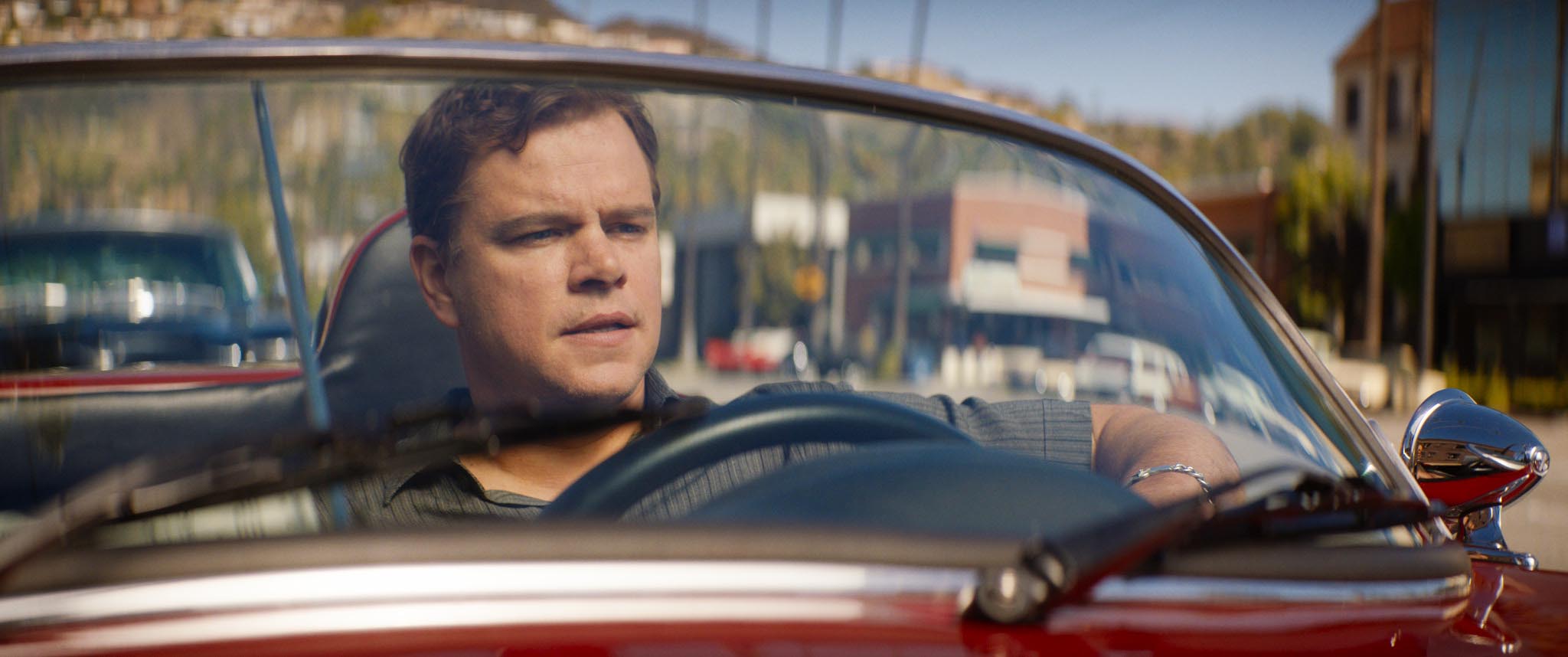
2. Los Angeles is characterized with sun, warmth, and saturated colors. Even though the movie takes place in the 60s, the intention was to present it as if we were currently there, rather than as a faded memory. James Mangold referenced photographs taken in the 60s, particularly marketing photographs that were featured in car magazines. The hyper-real and oversaturated colors informed the look of many scenes throughout the film.
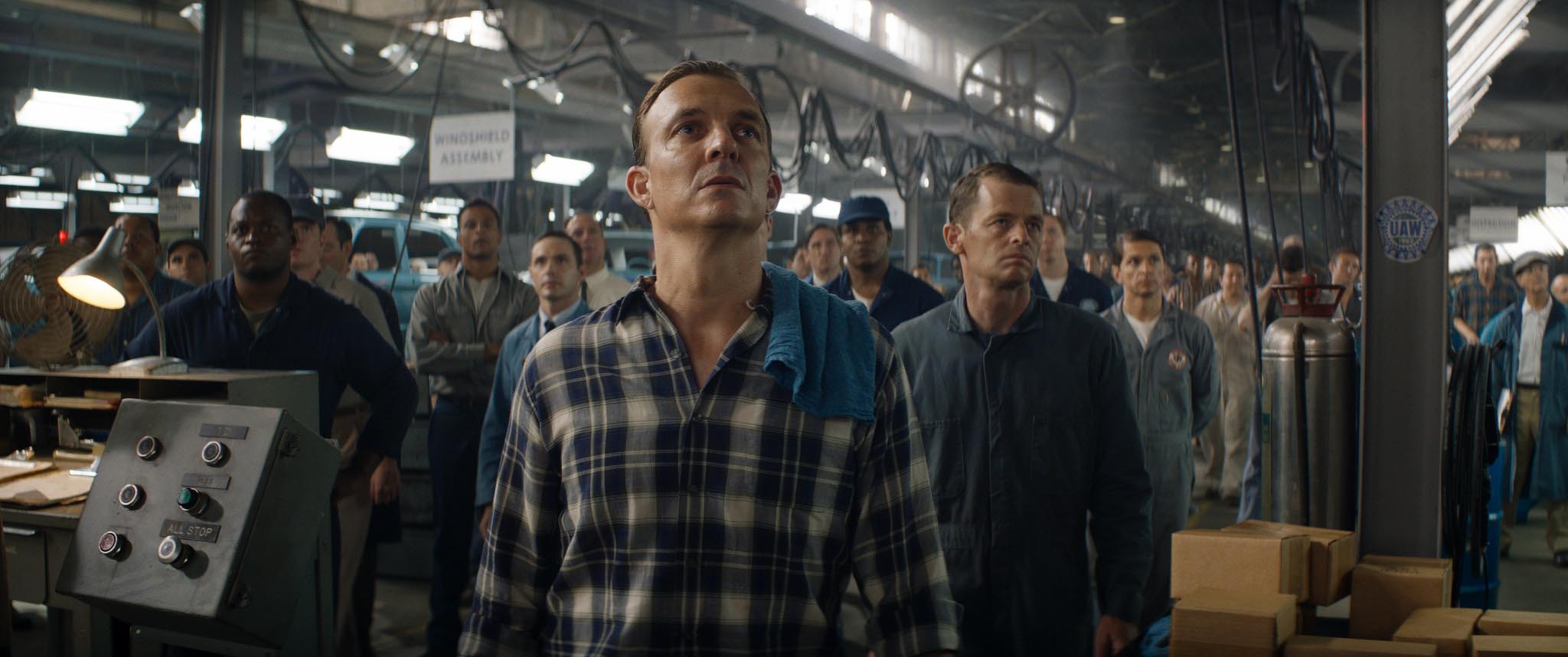
3. The Ford factory is cool, desaturated, and meant to feel mechanical and automated, in contrast with the warmth and “handmade” feel of Ferrari’s boutique factory in Italy. This is meant to reflect the industrial, mass-produced philosophy of Ford and Henry Ford II’s character.
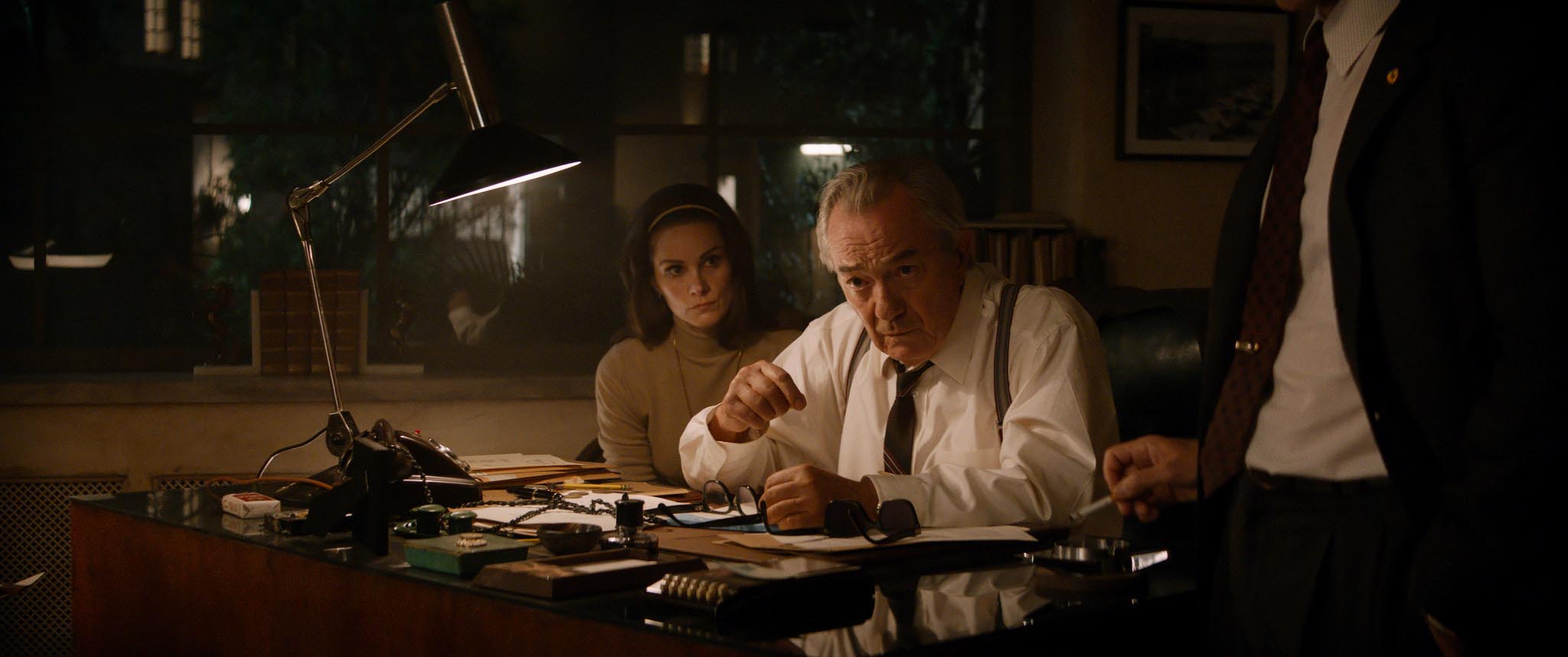
4. Coppola’s The Godfather was an inspiration for Enzo Ferrari’s office. Warm pools of light illuminate the cool and calculating man who defends his empire against Ford’s Lee Iacocca (Jon Bernthal).
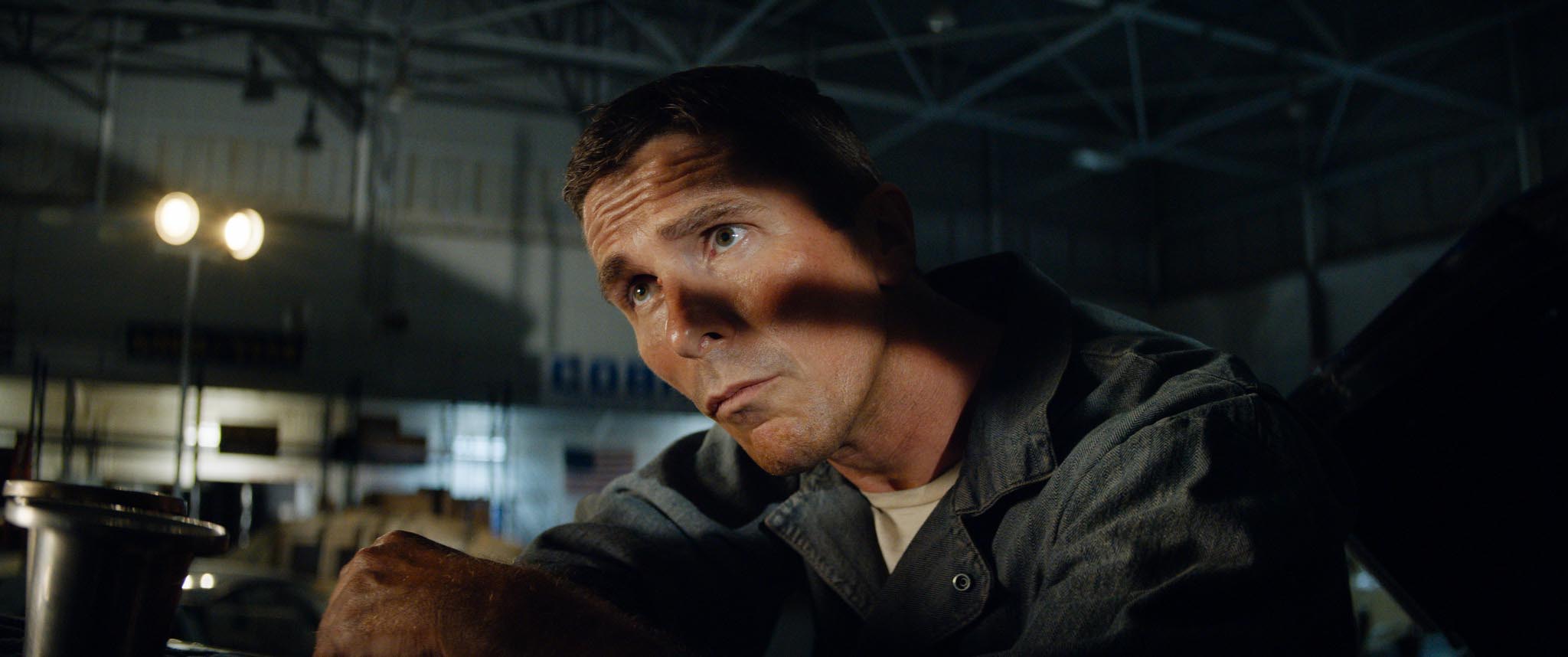
6. This is one of our favorite shots in the movie. As a plane crosses in front of the hanger, it casts foreboding shadows across the scene. It’s an emotional moment when Ken Miles (Christian Bale) listens as the Ford team, without him, loses Le Mans.
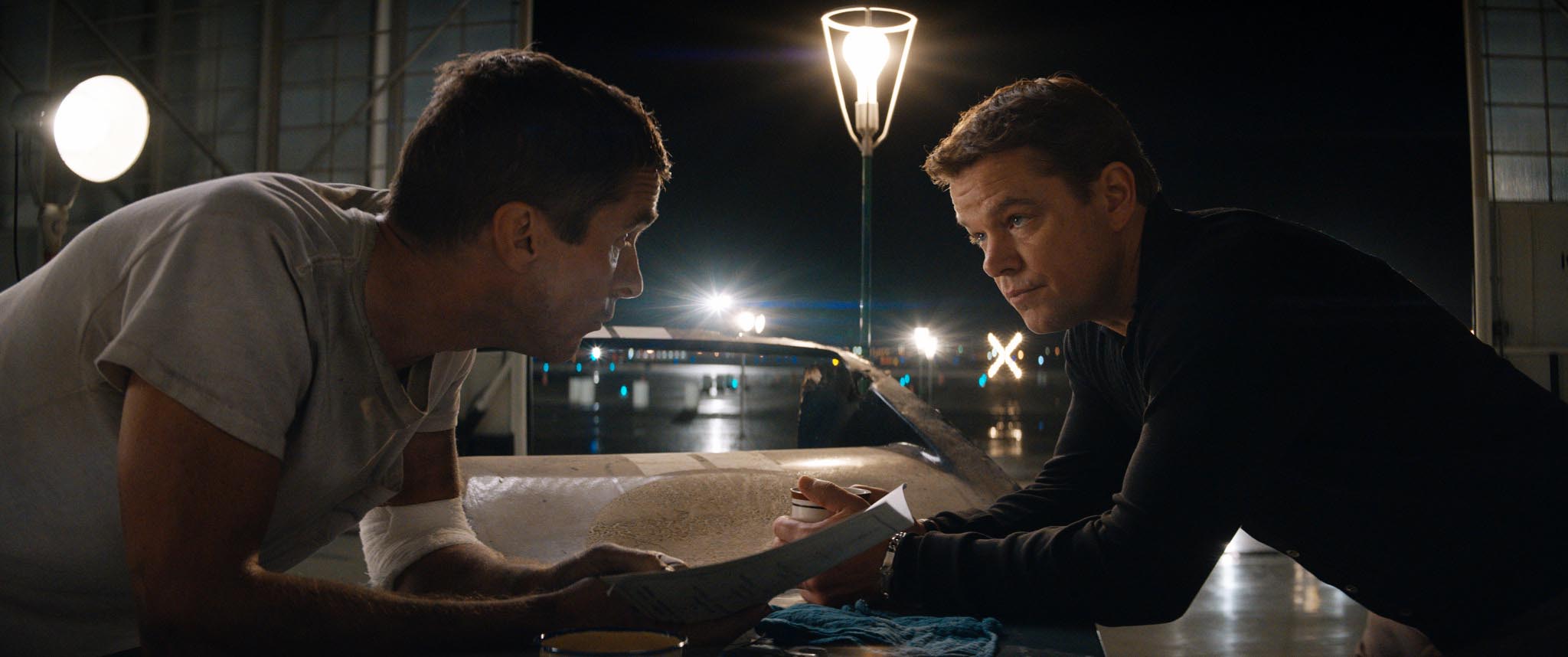
6. The interior of Shelby’s hanger at LAX is a blend between the cool blues of Ford and the warmth of Fer- rari, representing a blend of the two philosophies as he marries Ford’s industrial might with a handmade approach.
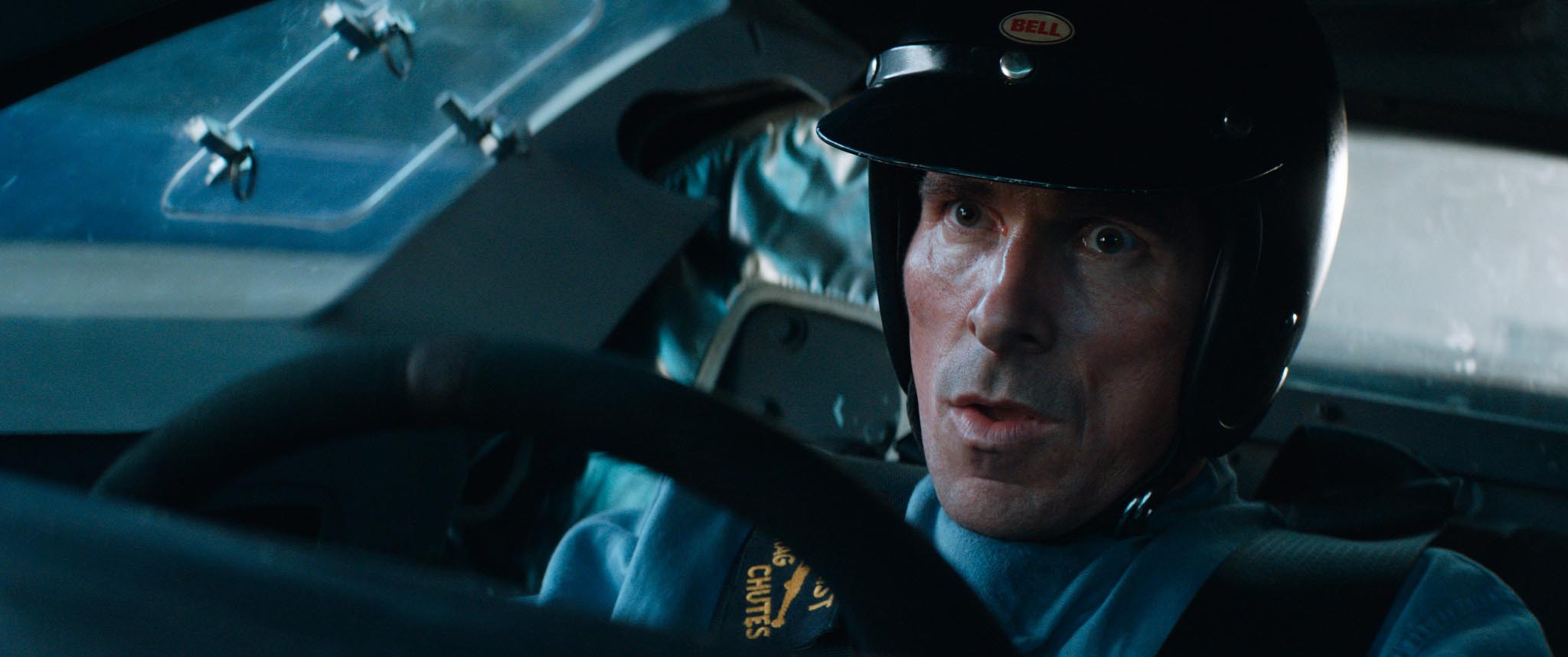
7. The introduction to the 24 Hours of Daytona race is at night with stadium floodlights serving as a key lights for the scene.
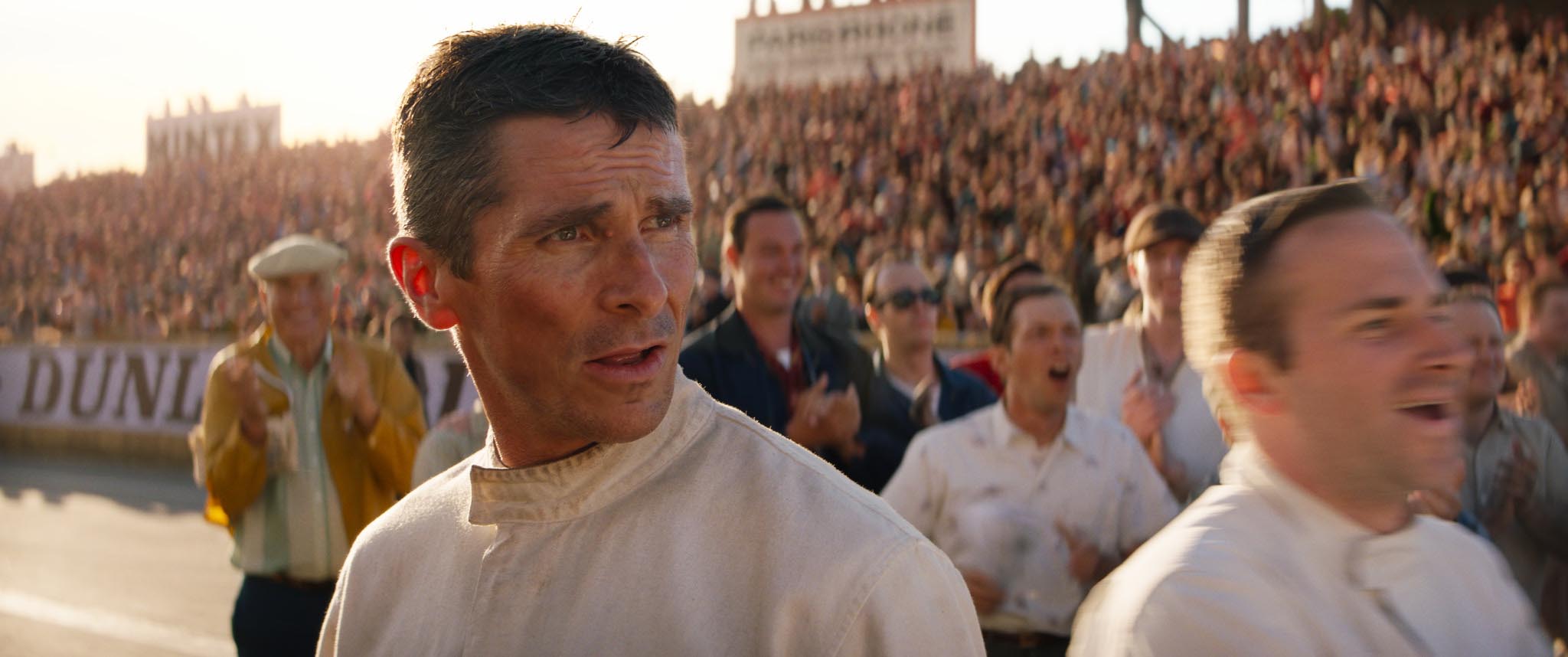
12. The bittersweet conclusion of the race is less saturated to reflect Miles’ realization that despite being in the lead, falling into formation with the rest of the Ford team dropped him out of first place.
(This is a “reprint” from November 2020 FDTimes issue 105.)

